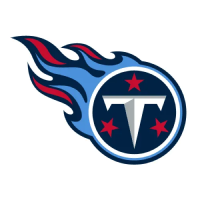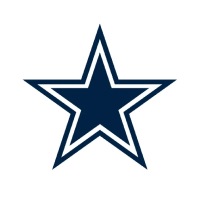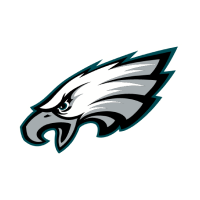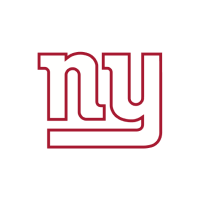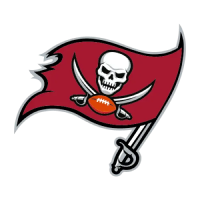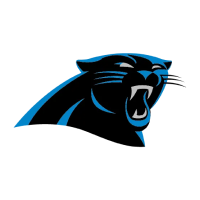The biggest domino in the 2021 NFL Draft cycle was knocked over by Kyle Shanahan and the San Francisco 49ers in March when the 49ers traded multiple future first-round picks to trade up from No. 12 to No. 3 overall and select the quarterback of their choosing. With former Clemson quarterback Trevor Lawrence Sharpie’d to the Jacksonville Jaguars’ pick at No. 1 overall, and former BYU QB Zach Wilson in pen to the New York Jets at No. 2, the NFL is still trying to riddle out which of the three remaining passers Shanahan traded up to acquire: Ohio State’s Justin Fields, North Dakota State’s Trey Lance, or Alabama’s Mac Jones.
Before we decide how each quarterback would fit in a Shanahan offense—and which one is the best option—we have to define what Shanahan wants in his quarterback; of course, this is a moving target. We know the quarterbacks who Shanahan has had NFL success with to this point, but Shanahan is 0-2 in Super Bowls and evidently frustrated with the level of quarterbacking he’s gotten from Jimmy Garoppolo, who’s currently under center in San Francisco.
Shanahan’s shifting preferences at quarterback are reflected in this quote, which he gave only a few months ago, following a primetime trouncing at the hands of the Buffalo Bills and their supremely talented quarterback, Josh Allen.
https://twitter.com/BenjaminSolak/status/1375500421184245767
This excellent recap of Shanahan’s quarterbacking commentary, by Chris Biderman, has more nuggets that can help us frame Shanahan’s quarterback hunt. In February 2017, eight months before the 49ers traded for Garoppolo, Shanahan said: “If you aren’t an extremely talented thrower, which means it’s effortless, you don’t think about it, you don’t have to go all these quarterback gurus and work on your motion, you were born to throw … If you don’t have that, it’s very hard to succeed in this league because you got to make some throws into tight windows, on time, with ball placement. It’s hard to get people wide open in this league.”
Shanahan is better than practically anyone else in the league at getting people wide open, but he recognizes the difficulty. That’s what’s reflected in his follow-up comment: “You’re always looking for one of those seven throwers on the planet, whatever that number is. I’m guessing there’s only around seven. So you better not only be set on that, saying, ‘Hey, I need one of those seven guys.’ I hope to get one of those seven guys, but if you don’t, you got to find other ways to win.”
Shanahan’s “other ways to win” has been his system. In working with quarterbacks like Matt Ryan (in 2015-16 as the Atlanta Falcons offensive coordinator) and Garoppolo, Shanahan hasn’t been lacking for accurate passers—but the buzz phrase “arm talent” doesn’t jump to mind when describing either. Neither are one of those elusive seven throwers.
So, what is that Shanahan system? It’s everywhere in the NFL now, so it rings familiar, but it’s still important to define just how Shanahan passes the football.
Shanahan puts his quarterbacks under center.
In the 2019 season, during Garoppolo’s one fully healthy season with Shanahan, he was third in under-center dropbacks with 185, behind only Kirk Cousins (Minnesota) and Jared Goff (Los Angeles). Both of those offenses are Shanahan-inspired. In 2016, Ryan led the league with 248 such dropbacks.
Those under-center drops are important, as the wide zone rushing attack that forms the bedrock of the Shanahan offense is best executed with deep-set running backs and the angles offered from under-center quarterbacks, especially when a fullback is brought into the fold. The wide zone rushing action allows for aggressive play-action fakes from the quarterback, which brings us to the next point.
Shanahan aggressively deploys play-action.
Shanahan has been a leader in the play-action clubhouse and deserves plenty of credit for the explosion of play-action attempts over the last few seasons. In 2016, Ryan led the NFL in play-action drops—both from under center and from the gun. Garoppolo was fourth in total play-action dropbacks and third in play-action drops from under center, again behind Cousins and Goff.
While the ceiling of play-action passing has yet to be reached in the modern NFL, it isn’t a magic wand that takes no skill to wave. On under-center drops, specifically, the quarterback must turn his back away from the defense, losing precious seconds to identify and attack the coverage shell. An oncoming, unblocked EDGE is always a possibility. And, of course, the quarterback has to be able to boot on his dropbacks.
Shanahan puts his quarterback on boot action.
A variety of boot actions are expected from Shanahan quarterbacks. A boot, which takes the quarterback’s drop back away from the standard straight drop back to the peak of the pocket, can look different depending on the concept. Behind wide zone play-action, Shanahan might boot his quarterback on a full “naked,” which leaves him without blockers and floods the field in front of him.
https://twitter.com/Nate_Tice/status/1225265539108335617
Shanahan might also half-roll his quarterback, giving him a boot look before stopping him suddenly and throwing back across the field. This is just another building block of the great Shanahan deception, in which every play looks like some play until suddenly it’s a different play.
https://twitter.com/BetterRivals/status/1173405335371091969
Garoppolo was 10th in boot dropbacks in the 2019 season, and Ryan was second, despite both lacking any open-field threats as runners. Shanahan actually once said that he prefers immobile quarterbacks for his boot action, because “I only want to run bootlegs and stuff if people aren’t playing them, and when you have a mobile guy, they’re playing them. When you don’t, [defenses] play the [play-action fake] and then you get slow quarterbacks out on the edge and they can throw all day.”
This all tracks. Despite each offensive structure regularly taking them out of the pocket, both Garoppolo and Ryan were infrequent scramblers in their top seasons with Shanahan. Unfortunately, I don’t know how many boots Shanahan called for Robert Griffin III in his rookie season, as Sports Info Solutions’ database only goes so far; but Shanahan said of mobile quarterbacks in the same quote: “Those few [mobile] guys you have, you need to put in a type of scheme that includes stuff like the zone read and things like that to give them a chance to use all of their attributes.”
Shanahan asks his quarterback to throw across the middle of the field.
We know in general that play-action helps passing games; and, to an additional degree of specificity, we know that wide zone play-action is particularly effective in the league. At a basic level, play-action is effective because it forces players with both run and pass responsibilities (usually linebackers) to trigger on a running play, displacing them from their pass defense alignment and responsibilities.
When linebackers are pulled downhill and away from the center of the field by wide zone blocking, space opens up behind them. This is the area of the field that Shanahan likes to attack. Garoppolo’s target heat map from the 2019 season, found in the Pro Football Focus QB Annual, shows a heavy target density between the numbers 10+ yards down the field: the area behind the linebackers.
https://twitter.com/MeshSitWheel/status/1379546058120908800
This is an intuitive idea, but it does have its drawbacks. Garoppolo has been a weirdly turnover-prone passer in the Shanahan offense, and it’s because that middle of the field area has a lot of players around it: linebackers, safeties, and cornerbacks. If a defender is keyed in on the play-action fake, they can fill that area of the field and make plays on the football. Because Garoppolo was often turning his back on play-action, he’d be late to see that defender and throw a maddeningly easy interception.
The quarterback finds explosives via yards after catch.
In Garoppolo’s 2019 season, he led the league in yards generated after the catch—the hallmark of a well-schemed offense.
https://twitter.com/PFF/status/1284956440675979271
This reality of the Shanahan scheme is also reflected in the wide receivers Shanahan has added recently. By drafting Deebo Samuel (2019) and Brandon Aiyuk (2020), Shanahan has secured perhaps the top YAC receiver in each of the last two drafts—both with premium picks. Samuel and Aiyuk create explosive gains on shallow concepts and are threats to take those middle-of-the-field routes and turn them upfield into scoring plays without forcing downfield, vertical shots from the offense.
We’ve captured the general ethos of the Shanahan passing game, in Atlanta and San Francisco, from alignment all the way to execution. With immobile quarterbacks who didn’t have transcendent arm talent, Shanahan wanted to line up under center, fake wide zone action, boot his quarterback out, and either take easy throws off of the boot action or attack the middle of the field behind the displaced linebackers. He prioritized run-after-catch athletes, not premiere route runners, and relied on his scheme and the quick distribution of his quarterback to give playmakers opportunities to rip off chunk gains.
Of the three options expected on Shanahan’s board, who fits this approach best?
Each can fit; none is a perfect fit. We’ll start with the most traditional look: Mac Jones.
Mac Jones
The current whispers on the wind believe that Jones will be the selection for the 49ers at No. 3 overall. NFL Network’s Daniel Jeremiah and ESPN’s Adam Schefter are the two biggest names to throw their weight behind the pairing, with Jeremiah saying in his most recent mock draft: "I'm not surprised San Francisco traded up to No. 3. I am surprised that everything you hear points toward Jones being the 49ers' pick at No. 3."
Jones looks like a Shanahan quarterback. As a pocket passer with solid height (6-foot-2) and weight (217 pounds), Jones was shockingly accurate. My annual charting for the quarterback classes, Contextualized Quarterbacking, has Jones as the most accurate passer in any of the last four quarterback classes. He threw a catchable football on 19 of every 20 attempts I charted—that’s simply bananas.
However, I don’t just chart accuracy for catchable football. In terms of precise ball placement—placement that maximizes yards after the catch, for example—Jones experiences a substantial drop-off. He’s still a competitive and accurate passer but not nearly as impressive against the rest of the class. To the intermediate areas of the field—which Jones targeted heavily—he was not as precise as Fields, Lawrence, or Wilson: his compatriots at the top of this quarterback class. Some of this concern is wrought from a middling NFL arm, as Jones has to throw with elite anticipation—and does!—to hit intermediate windows, but accordingly is more so aiming to an area than hitting a WR in stride.
| Target Rate | Accuracy | Placement | |
|---|---|---|---|
| Mac Jones | 26.3% | .933 | .600 |
| Justin Fields | 27.7% | .918 | .771 |
| Trey Lance | 28.4% | .833 | .526 |
| Zach Wilson | 30.8% | .821 | .686 |
| Trevor Lawrence | 23.7% | .809 | .700 |
These intermediate throws are important, as the offense Jones ran at Alabama under OC Steve Sarkisian clearly borrowed some ideas from Shanahan’s offense. (Sarkisian, incidentally, was Shanahan’s successor as OC of the Falcons.) The Crimson Tide replaced Shanahan’s under-center dropbacks with pistol dropbacks for Jones—keeping good angles and forcing Jones to turn his back—and booted him on a respectable 7.5% of his dropbacks.
Jones was again a perfectly accurate quarterback on boot action but not outlandishly special. Rarely tasked with actually throwing on the move and often permitted to set his feet, these were easy throws afforded by Alabama’s superior talent and quality scheme. On those few reps on which Jones was forced to throw from an adjusted (~14% of his dropbacks) or moving platform (~6% of his dropbacks), Jones’s ball placement scores dropped to perilously low levels.
https://youtu.be/r0hW1CnRMUE
Jones’ charting data simply looks like that which we’d expect from a Shanahan passer: ludicrously productive on a heavy dosage of play-action, free to hammer open windows, and bask in the glow of uninterrupted YAC, but challenged by moving platforms and tight windows. The lack of precision at the college level is concerning for a pro projection when the margins get smaller; and many of Jones’ explosive gains were born of a pretty deep ball, that we’re yet unsure how Shanahan would integrate into his offense.
Justin Fields
Fields brings a similar penchant for the deep ball as Jones does. Fields’ ball placement score on throws 20-plus yards downfield is the best I’ve given out in four seasons of charting—he threw a perfectly placed ball on 70% of his downfield attempts—and the Ohio State offense gorged itself on this inexplicable talent by building an offense obsessed with vertical routes. A decisively un-Shanahanian offense.
As such, Fields’ action on wide zone boots is a bit different than what we’d expect to see from a similar structure in San Francisco. He had the smattering of split zone dump-offs to a tight end or throwback on "leak," but often Ohio State leveraged the boot action into an isolated vertical route from an outside receiver—something you’d rarely see in the 49ers’ offense.
https://youtu.be/TLJv83OZKwQ
Fields was wickedly successful on boot action. He picked up a first down or touchdown on 27 of my charted 50 rollouts or sprintouts, but Ohio State wasn’t using that backfield action to open the middle of the field. Play-action was no different. On 65 dropbacks, Fields completed a ludicrous 81% of his passes and had accuracy and placement scores better than Jones, Lawrence, or any other quarterback in this class. With his stunning accuracy to the middle intermediate area of the field considered, there is no concern with Fields running the Shanahan boot series—he’d shred it up
There is, however, concern with Fields in the quick game. Shanahan’s QBs, in Garoppolo and Ryan, have had low times to throw and low depths of target as they leaned on the YAC game to find explosive gains. Fields did not enjoy much YAC at Ohio State (31.5%) because of the nature of the offense but also because he’s not a particularly strong quick game passer.
Fields’ ball placement scores are worse on 1-step drops than on any other drop depth, and his most accurate passes come at the intermediate level of the field—not in the short areas. Fields has long been criticized for his comfort through progressions, which is a libelous claim, as he threw beyond his first read 19% of the time and with delightful accuracy and explosiveness. But he does have a generally slow process, favoring methodical management of the pocket and a “see it, then shoot it” throwing style. That lack of anticipation and laborious throwing motion makes executing the quick game more difficult.
| Depth of Target | Accuracy | Placement |
|---|---|---|
| 20+ | .882 | .662 |
| 10-19 | .918 | .795 |
| 0-9 | .944 | .709 |
| Behind LoS | .917 | .734 |
If Shanahan wants Fields, the wide zone series of his offense will remain. But suddenly, a shift is necessary in his base route distribution. Fields can execute stick and slants—staples of the West Coast playbook that he saw at Ohio State and would see in San Francisco—but would be maximized by an offense more willing to flood deep zones, give him deeper dropbacks, and let him rip off explosive downfield shots.
We’ve never really seen Shanahan run an offense like that. It’s possible, and with a player of Fields’ talent at the helm, likely better than any passing game Shanahan’s had at San Francisco to this point. But it does represent a shift, and accordingly, there are questions about the surrounding personnel. Do the 49ers have good downfield targets in Aiyuk and Samuel? Is their interior offensive line strong enough to protect for Fields, who tends to invite pressure in the pocket?
Trey Lance
Lance is the ultimate wild card in this conversation. I go both ways on him.
At the surface level, you can argue Lance’s offense has the most comparable features to Shanahan’s offense—they look like cousins. While the North Dakota State play-action game featured a lot more power-blocking run action than zone action, Lance booted on a whopping 14% of his dropbacks, featuring the full gamut of nakeds, deep shots, intermediate touch throws, and half-rolls to attack throwback options. The Bison had a cheat code at the FCS level, with a 6-foot-4, 227 pound Mack Truck that could stop his feet and throw 50-plus yards across his body. So they used him.
https://youtu.be/IiBjCT42p5Y
When North Dakota State wasn’t using play-action to hunt for explosives, they were a quick game offense, and Lance has an innate feel for quick game rhythm and windows that shines relative to the lethargy of Fields and the robotics of Jones. His best plays here are exactly that which a West Coast coordinator hunts: tall in the pocket, quick to trigger, and precise in his placement.
But Lance simply is not polished, and accordingly, his arc is at least a year longer than that of Fields and Jones. The 49ers do have Garoppolo still under contract to bridge that divide, but an aggressive trade-up is not the move of a waiting team. No matter what they say, the 49ers would like their top quarterback to contribute now.
This inconsistency is reflected in a stark reality for all Lance/49ers truthers: He just may not be accurate enough. Regardless of what exact archetype Shanahan wants at quarterback, there’s no doubt that he still wants to scheme guys open and then see his quarterback hit the open player. Fields and Jones do that better than anybody else in the class—better than almost anyone else I’ve charted!—and Lance does not.
| Accuracy | Placement | |
|---|---|---|
| Trey Lance | .881 | .556 |
| Justin Fields | .926 | .611 |
| Mac Jones | .925 | .517 |
| Zach Wilson | .856 | .605 |
| Trevor Lawrence | .858 | .589 |
Lance’s accuracy numbers are stark relative to the rest of the Big 5, including the other presumed targets for the 49ers at No. 3. He’s excellent on the move but shaky from adjusted platforms, which speaks to the fact that he’s still a natural thrower without many scripted answers at this stage in his development. His interceptable passes, which occur at a higher rate (3.3%) than the rest of the Big 5 despite not throwing a pick until his last college game, disproportionately come when he’s unpressured and left clean, speaking to his occasionally haywire accuracy.
https://youtu.be/yKstA-xhhok
Of particular concern: Lance looks least accurate when trying to hammer closing windows, especially in the intermediate level of the field. Lance has a naturally strong arm, but when he reaches back for some extra mustard on a challenging throw, his mechanics seem to deteriorate and he fires without aiming, leading to some austere misses. Intermediate accuracy seems like a non-negotiable in the Shanahan offense, and at this stage, I’m not sold that Lance has it.
So... who’s the QB?
I don’t know. Disappointing conclusion after all that, huh?
I can confidently say that Shanahan is accepting of and interested in other archetypes of quarterbacking beyond that which he’s deployed with Ryan and Garoppolo. I can also say that he’s willing to add in the necessary wrinkles to maximize mobile quarterbacks and won’t force a square peg to fit into the round hole of his system.
I think Shanahan likes Jones and would be fine taking him, but with the premium cost of the trade considered, I believe Shanahan has found one of his seven legendary arms. That player isn’t Jones. It’s either Fields or Lance.
Fields probably has the better arm outright and the better throwing process at this time—though Lance’s potential here is superior, and his arm is plenty nuts. Lance also projects as a better quick game passer, which is important to any West Coast approach. But again: Lance is at least a year out from starter-caliber play. Fields could start a playoff game tomorrow, and I’d feel confident he’d perform
If Shanahan drafts Fields, the offense will become more vertical and incorporate some designed QB runs; if he drafts Lance, it’ll become more quick game dependent and will incorporate a lot of designed QB runs. Both are viable options, but I’d give the slight edge to Lance at this time—especially because the 49ers have Garoppolo in hand to ease his onboarding.
With that said, I would not be surprised at all by a Fields selection, and even Jones wouldn’t blow my mind. All three demonstrated scheme fit and exciting talent at the college level. Jones represents safety and an unchanged offensive approach; Fields represents a dedicated interest in becoming a more aggressive passing team; and Lance represents a sky-high ceiling, within the scheme, a year or two down the road.
So, those are the options. Now, we wait to see who the pick actually is.
Filed In
Related Articles
NFL Draft
Arik Gilbert Doesn’t Need Big Workload To Be A Top NFL Draft Pick
- Aug 22, 2022
NFL Draft
2023 NFL Mock Draft: Marino 1.0
- Aug 22, 2022
Written By









